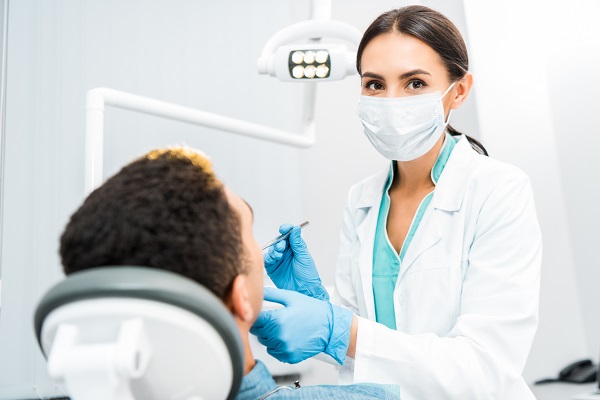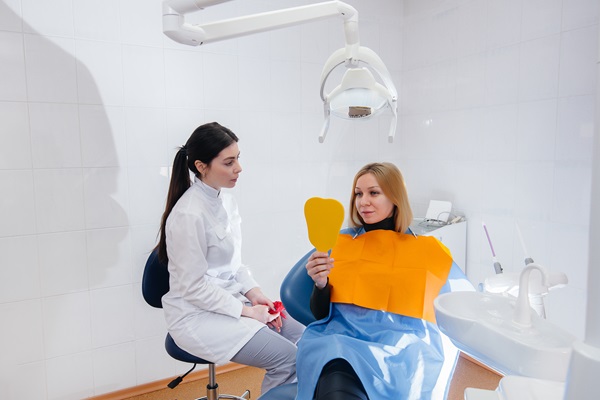How an Emergency Dentist Can Save Your Avulsed Tooth

An avulsed tooth is a serious dental problem that should be addressed by an emergency dentist. Emergency dentists are great resources to make use of when something serious happens within the mouth, and an avulsed tooth is certainly such a situation.
Visit an emergency dentist for an avulsed tooth
Want to know how an emergency dentist can save an avulsed tooth? Keep reading to find out.
What is an avulsed tooth?
Dental avulsion is when the tooth becomes completely displaced from its socket. Typically avulsion happens when an injury occurs, such as a blow to the face or a significant fall, that causes the tooth to dislodge itself.
Why is an avulsed tooth considered an emergency?
An avulsed tooth is considered a serious problem by emergency dentists because when the tooth comes out of the socket, it is often extremely difficult to replace it. The empty socket will expose the roots and nerves, which can be extremely painful and dangerous for the entire mouth. When this happens, there is more risk of infection or nerve damage. The patient should bring the tooth with them to the emergency dentist, in case it can be saved.
What can an emergency dentist do about an avulsed tooth?
When a person experiences an avulsed tooth, it is best for them to immediately visit an emergency dentist so that the necessary treatment can begin. First, the dentist will examine and inspect the area to see what happened and what condition the tooth and socket are both in.
If the tooth is salvageable, the emergency dentist will likely try to reposition it back into the socket. This procedure is known to cause discomfort, which will be managed through pain medication and anesthesia. Using a lot of saline solution and a dental tool, the emergency dentist will carefully put the tooth, roots side down, back into the empty socket. It is likely that the gum walls tore when the tooth became avulsed, which requires sutures. The emergency dentist will use extremely tiny dental sutures to repair the socket and gum lines.
Once sutures are placed, the emergency dentist will take x-rays to see if the roots are meeting up with the socket properly. Oftentimes, this cannot be seen without x-rays since it is beneath the crown of the tooth. In some cases, the patient may also require a dental splint, which holds the repositioned tooth in place. The splint is usually necessary for two weeks while the roots reconnect with the socket.
In addition to pain medication, the emergency dentist will also prescribe antibiotic medicine to help reduce the chances of infection while the area heals. It is important to note that not all avulsed teeth can be repositioned by an emergency dentist. They will do their best to repair and replace the natural tooth, but in some cases, a complete replacement is required.
Do you need an emergency dentist?
Never let an avulsed tooth go ignored. It can do irreversible damage to the mouth if an emergency dentist does not take the necessary actions to treat it. For further questions or concerns, reach out to our team today.
Request an appointment here: https://www.johnbburgessdds.com or call John B. Burgess, DDS at (865) 321-9505 for an appointment in our Oak Ridge office.
Check out what others are saying about our services on Yelp: Read our Yelp reviews.
Recent Posts
Are you considering getting a smile makeover and looking into all the available options? While some people who want to makeover their smile know exactly what they want, not everyone does. This makes it a good idea for anyone interested in getting their smile made over to understand the options available, which often starts with…
Over-the-counter teeth whitening products can cause teeth sensitivity, gum irritation, and undesirable results. Instead, it is best to visit a licensed dentist for teeth whitening treatment. They can ensure the safety and effectiveness of teeth whitening treatment. While it may be tempting to try and save a few dollars on a store-bought whitening kit, it is…
A dental implant may impact your teeth straightening options and treatment itself. You likely have a dental implant because you have had a missing tooth and chose an implant as your tooth replacement option, along with a dental restoration such as a crown. A healthy mouth is one that has a full set of straight…
A restorative dentist can help you to build the smile of your dreams. These are typically general dentists who spend a large portion of their time performing restorative treatments. While dental restorations focus primarily on restoring the function of damaged teeth, these treatments also provide cosmetic benefits.Dental technology has made tremendous improvements in the past…


